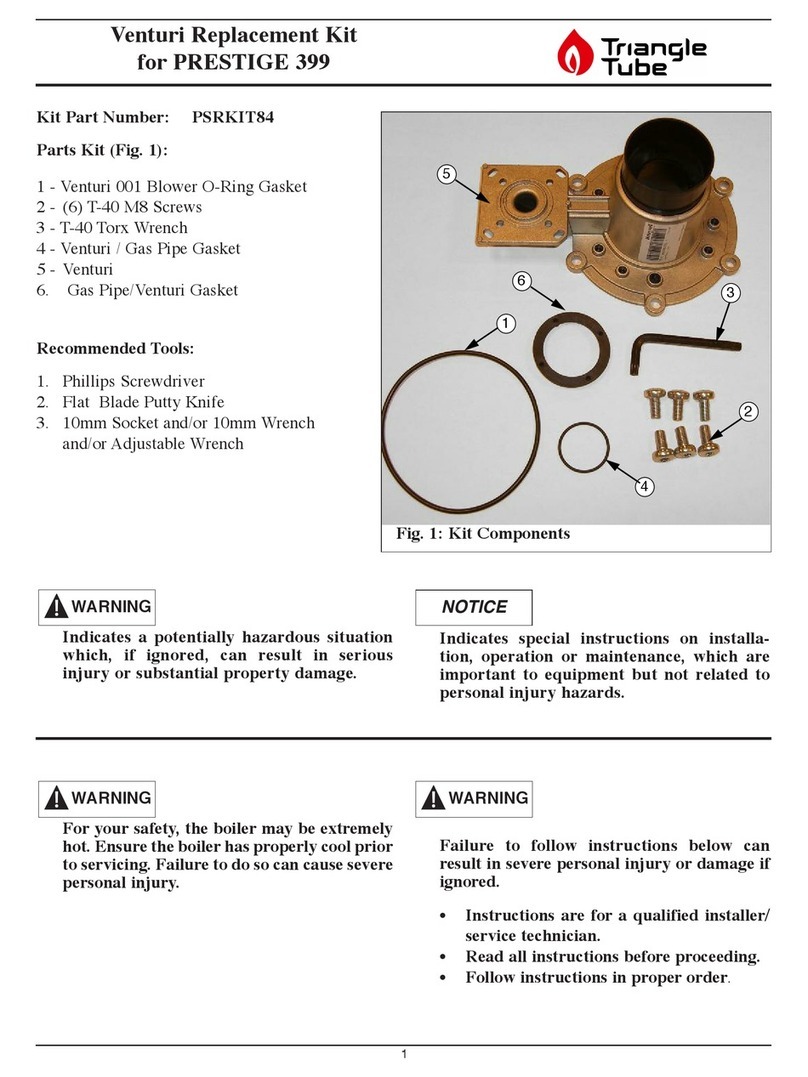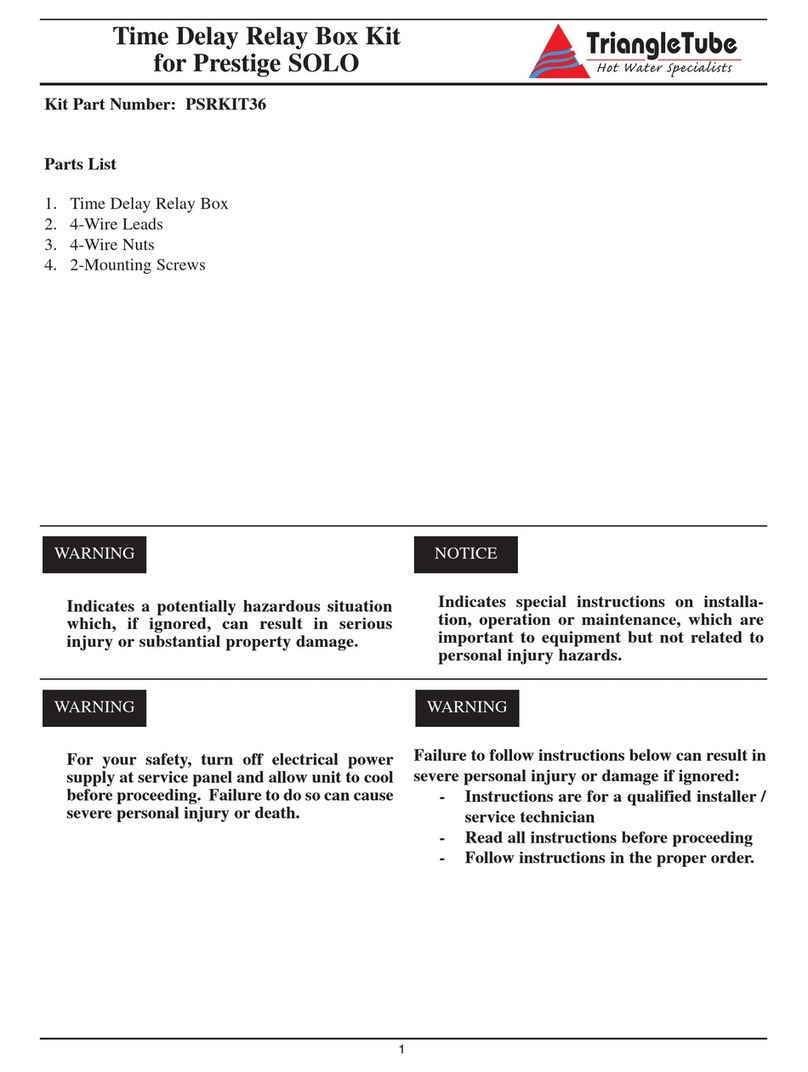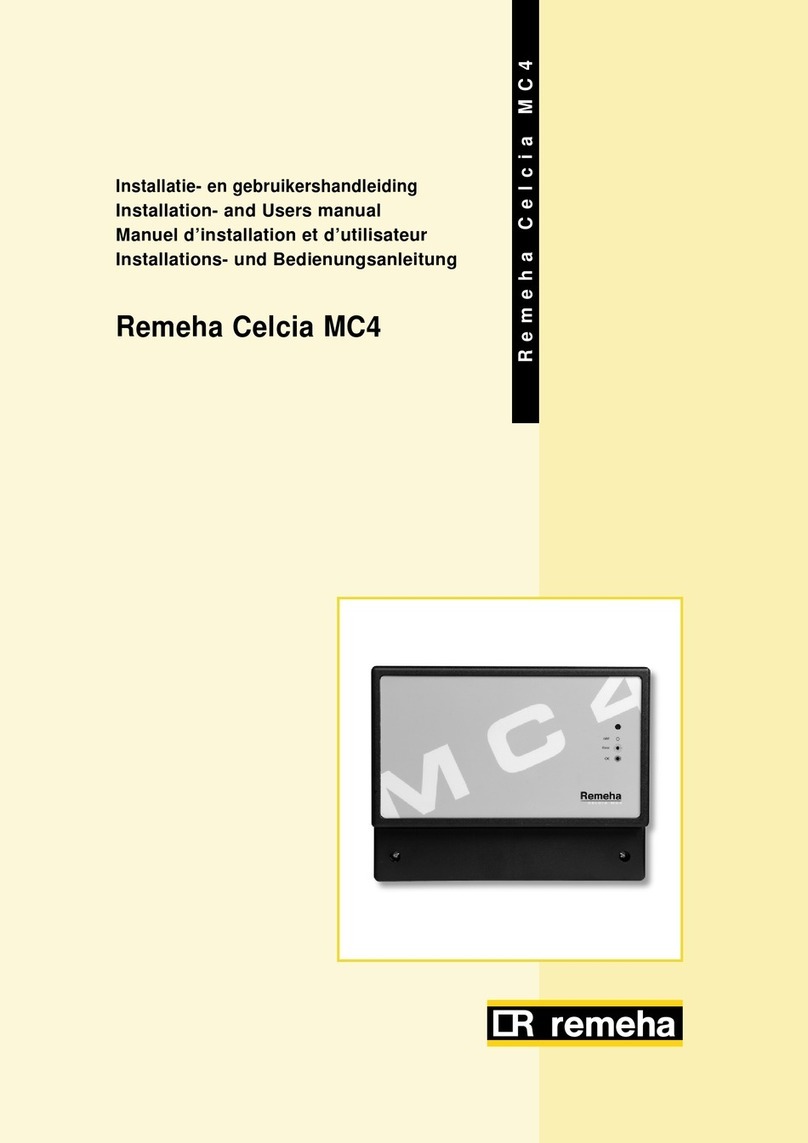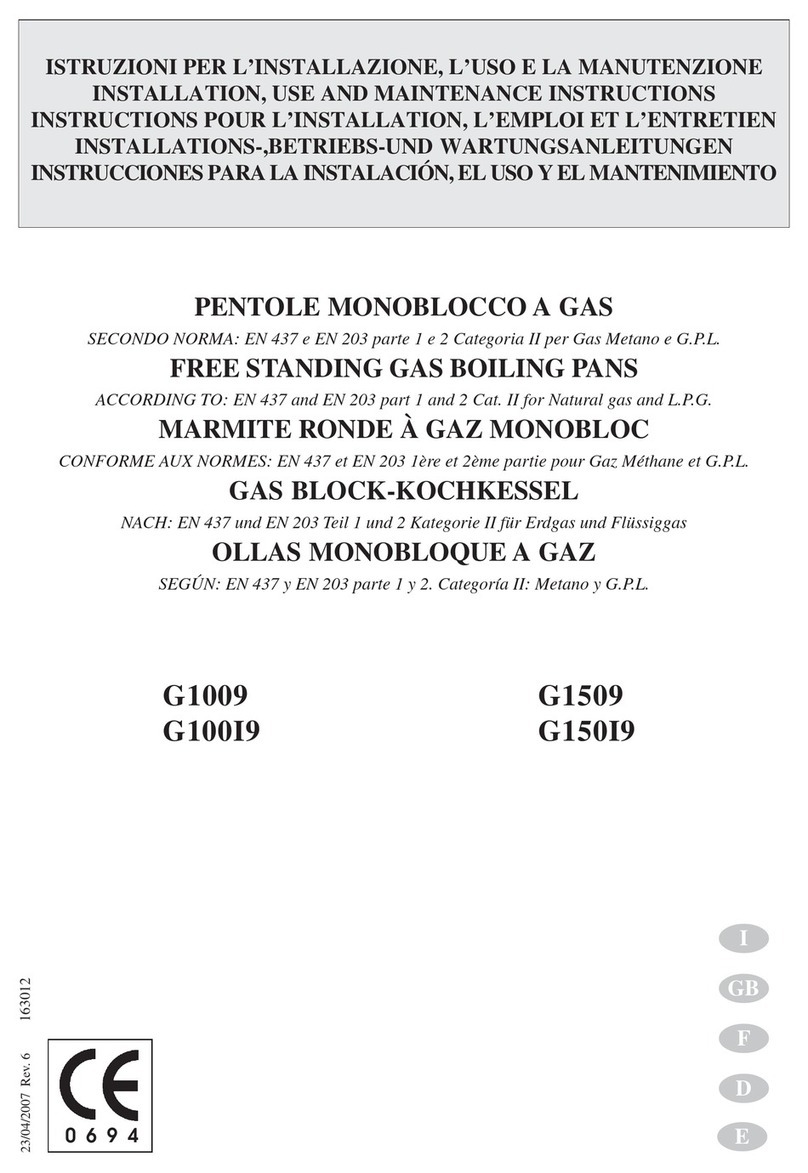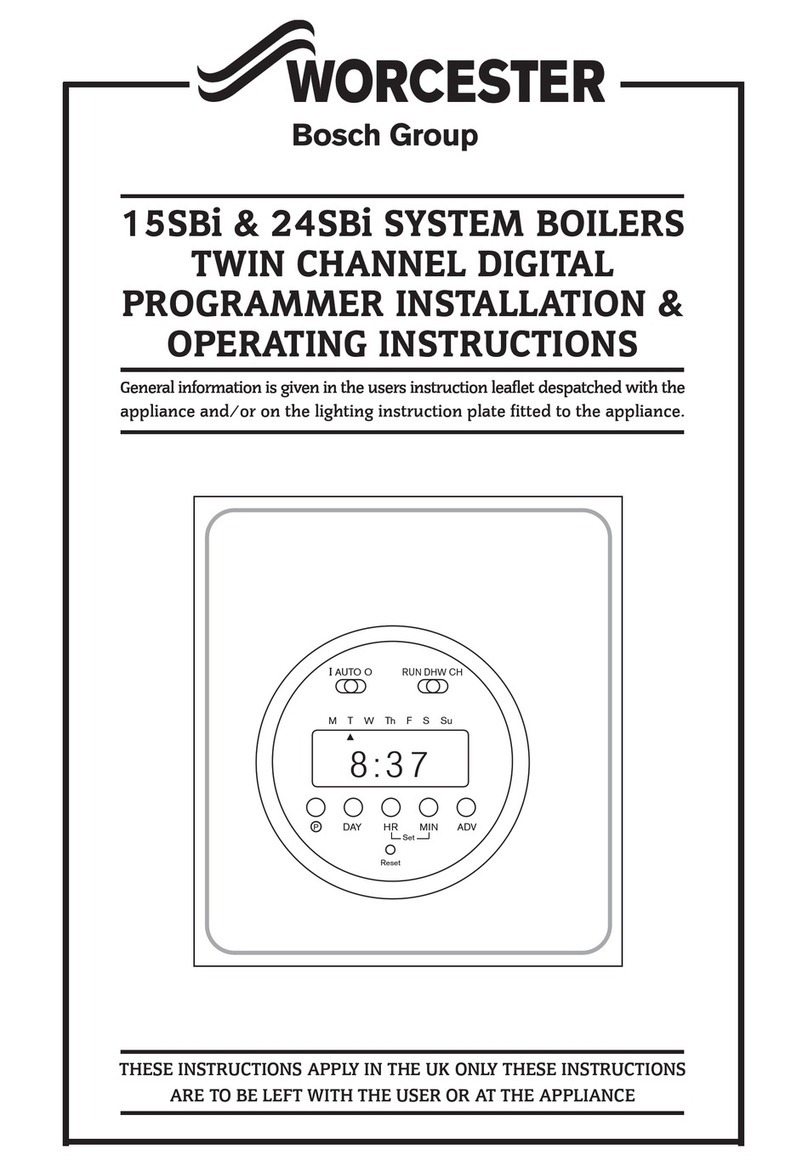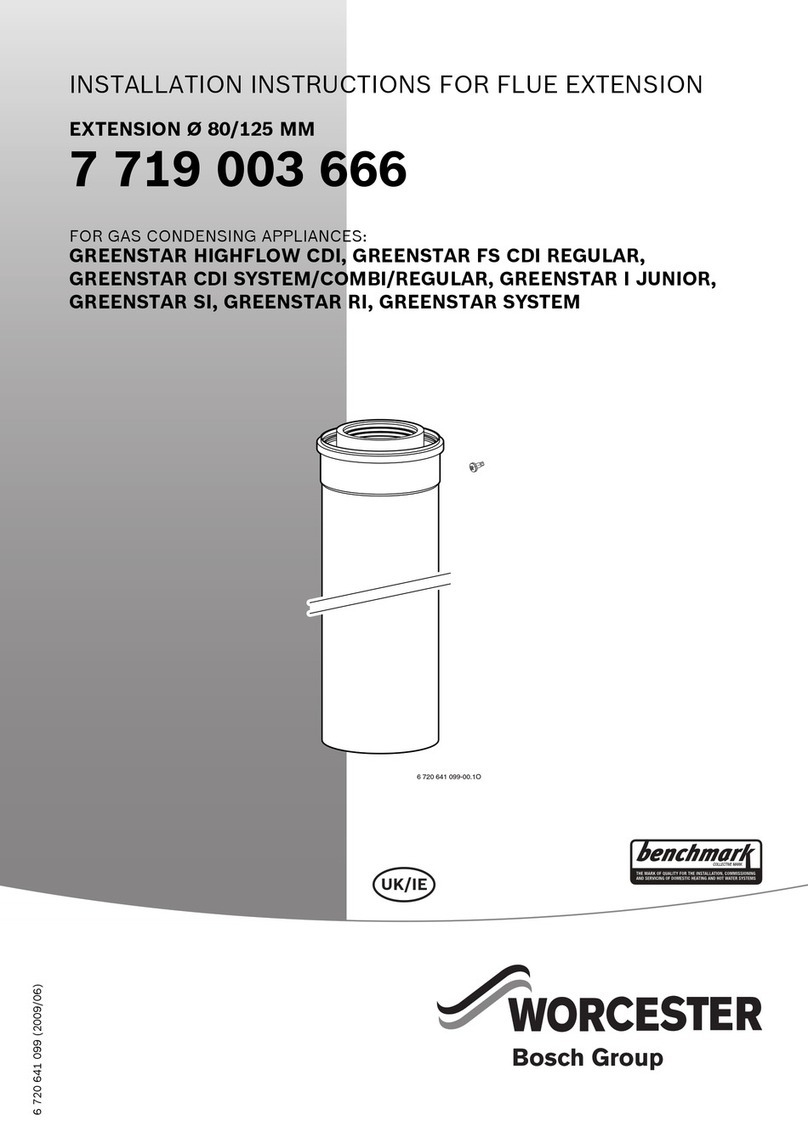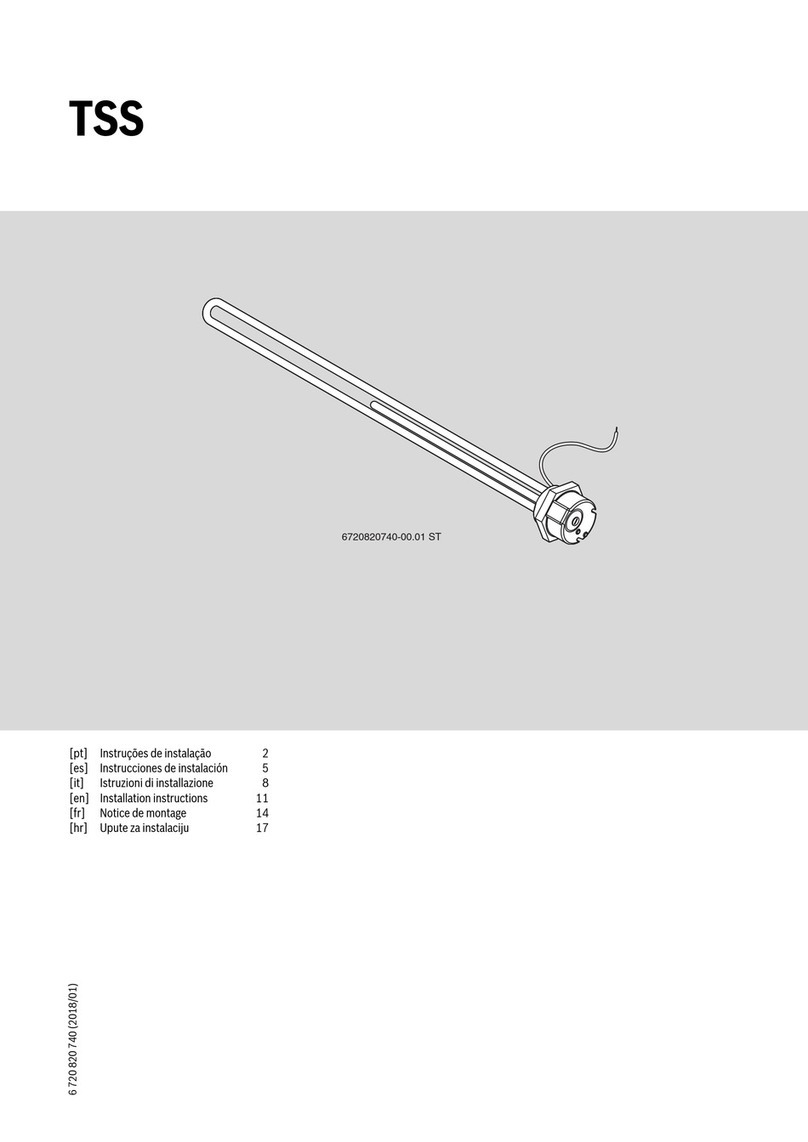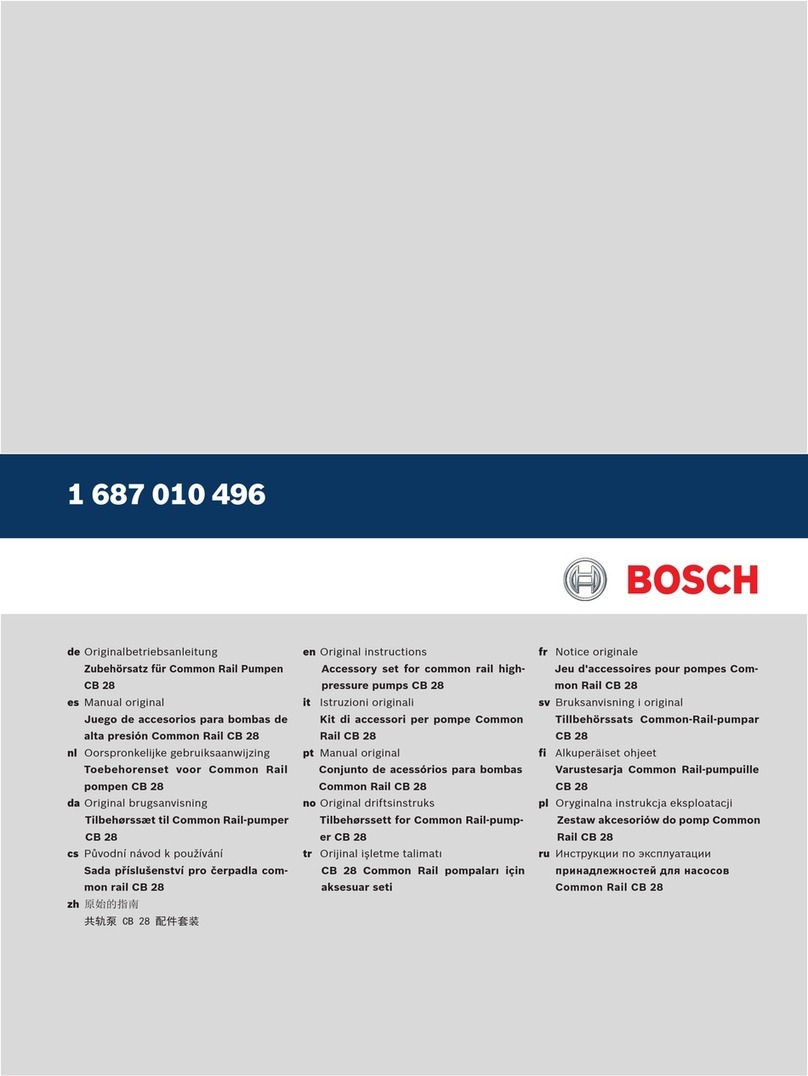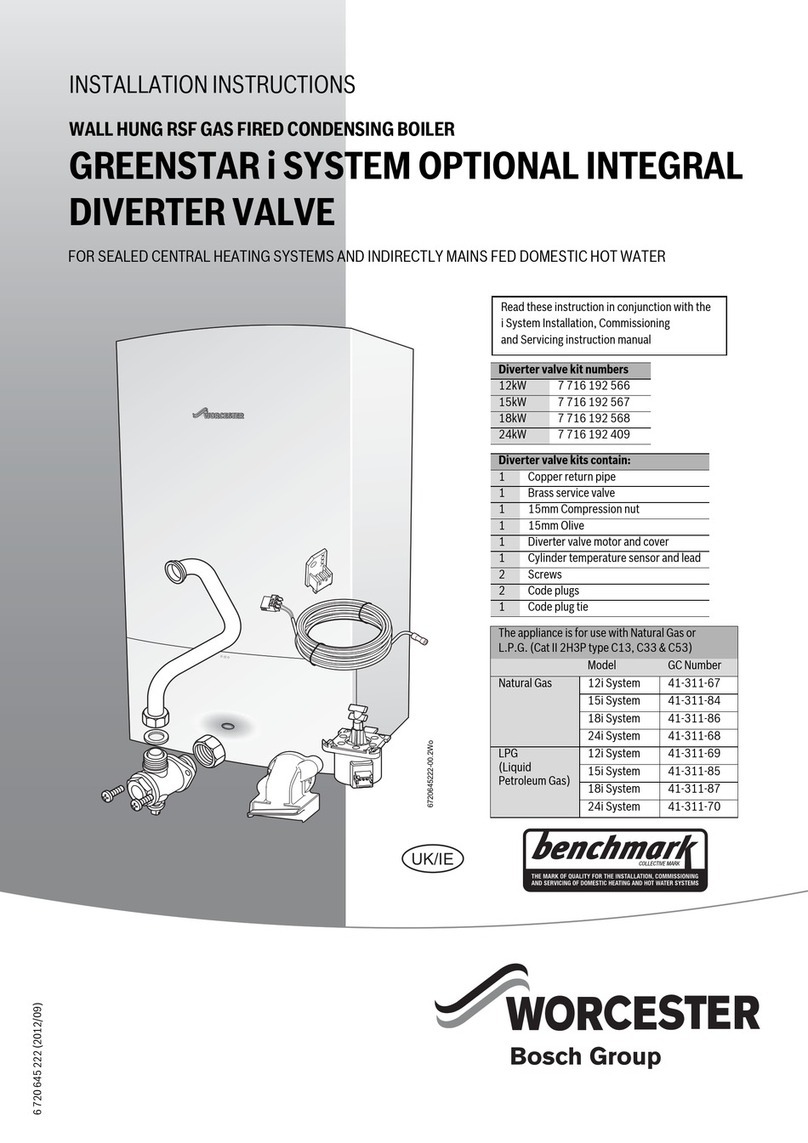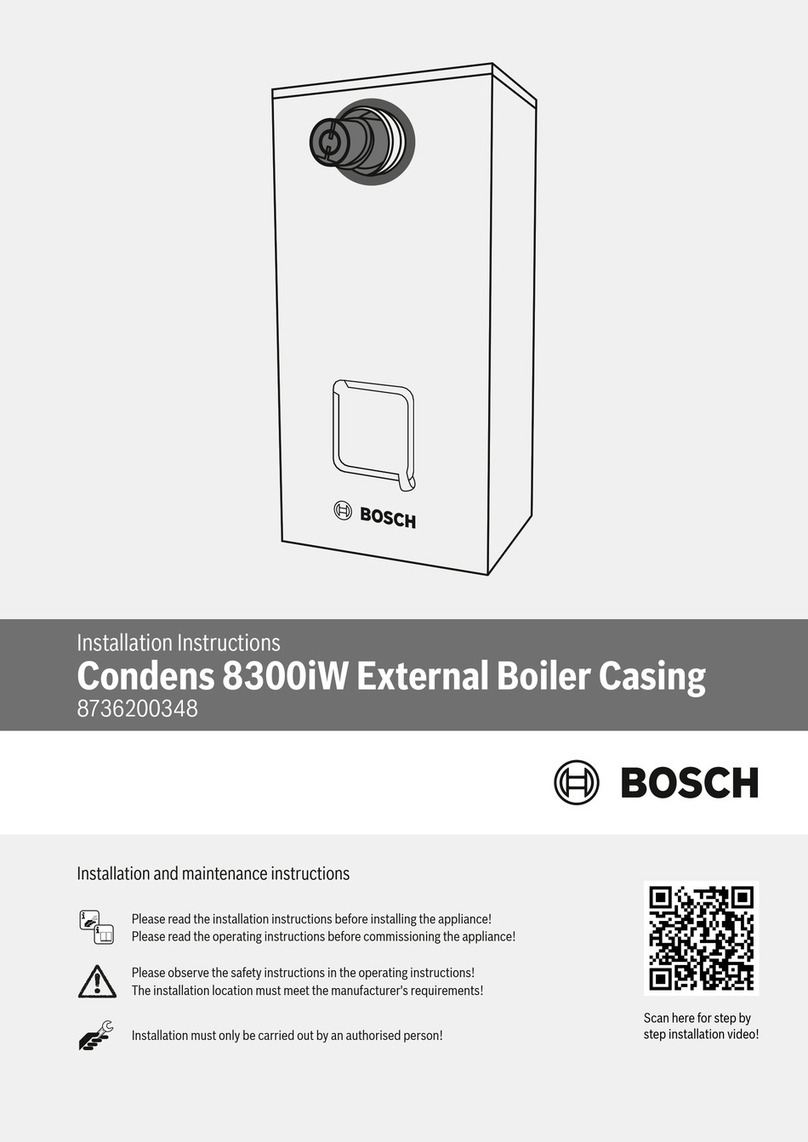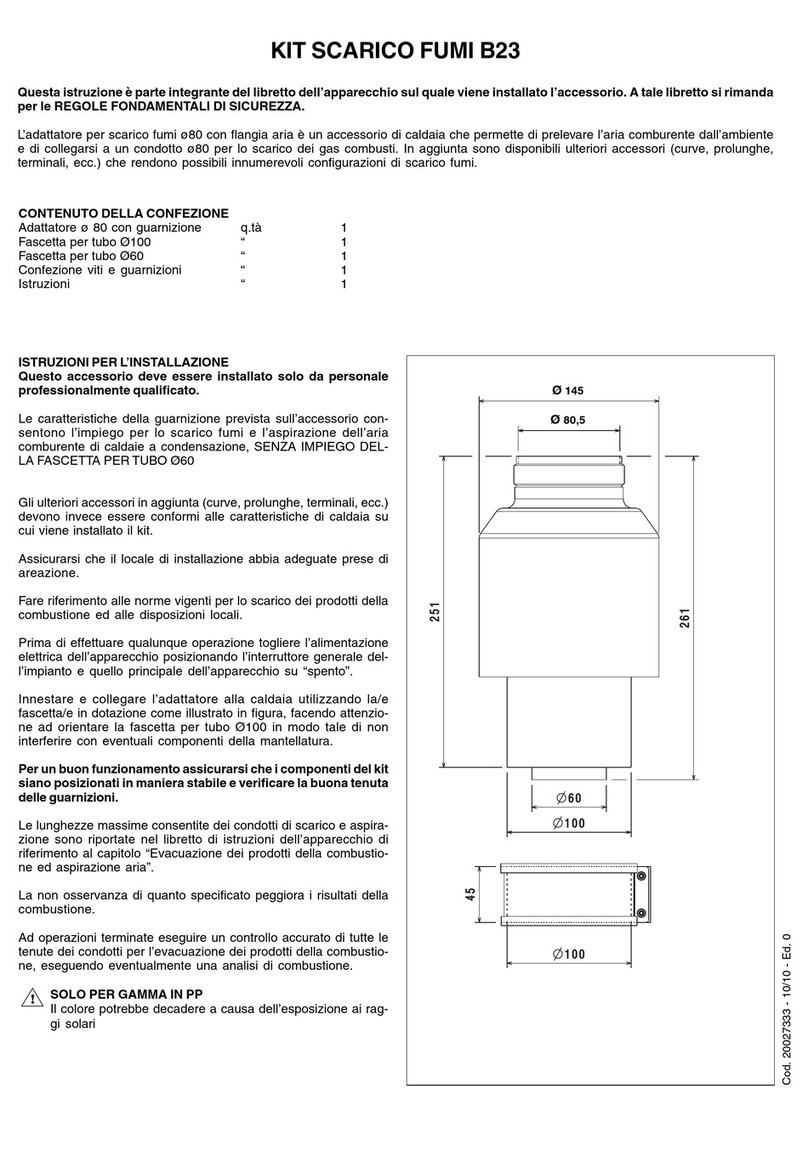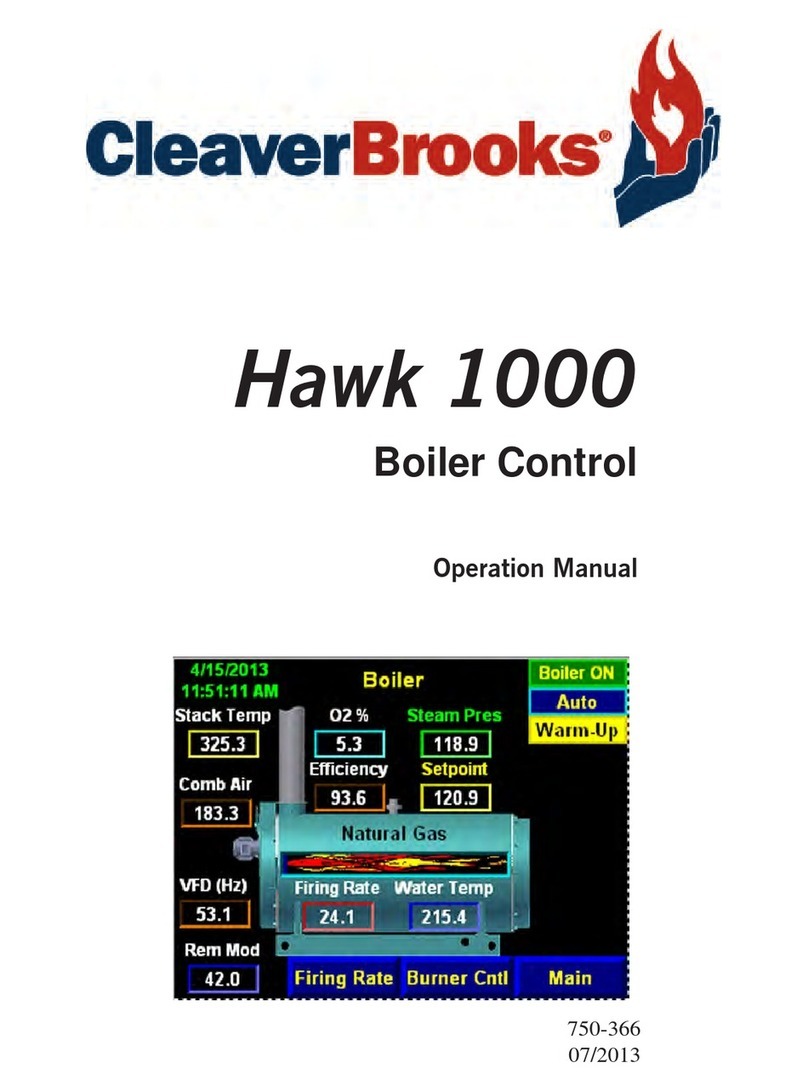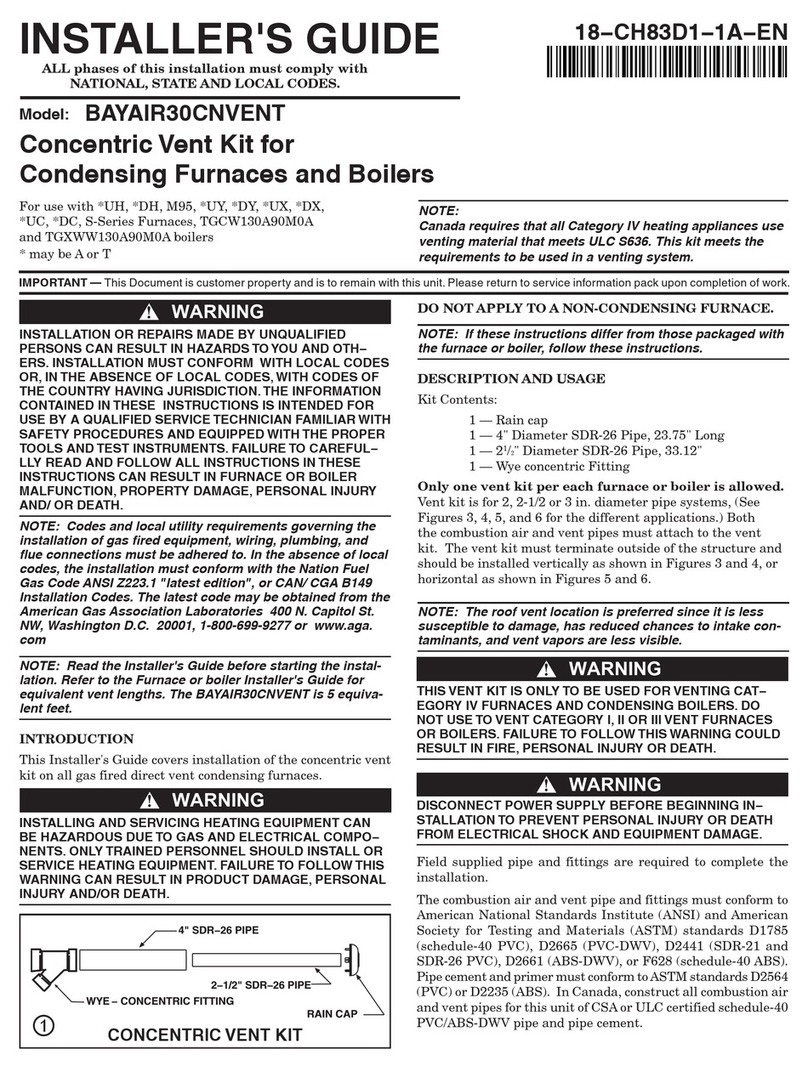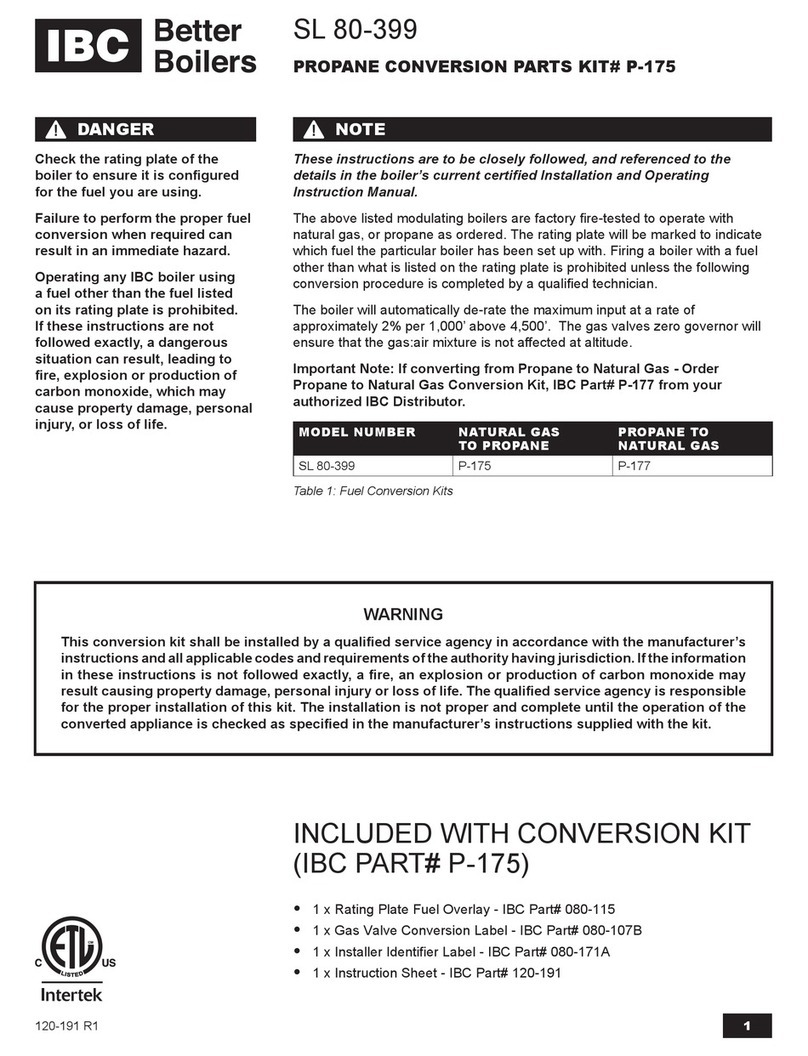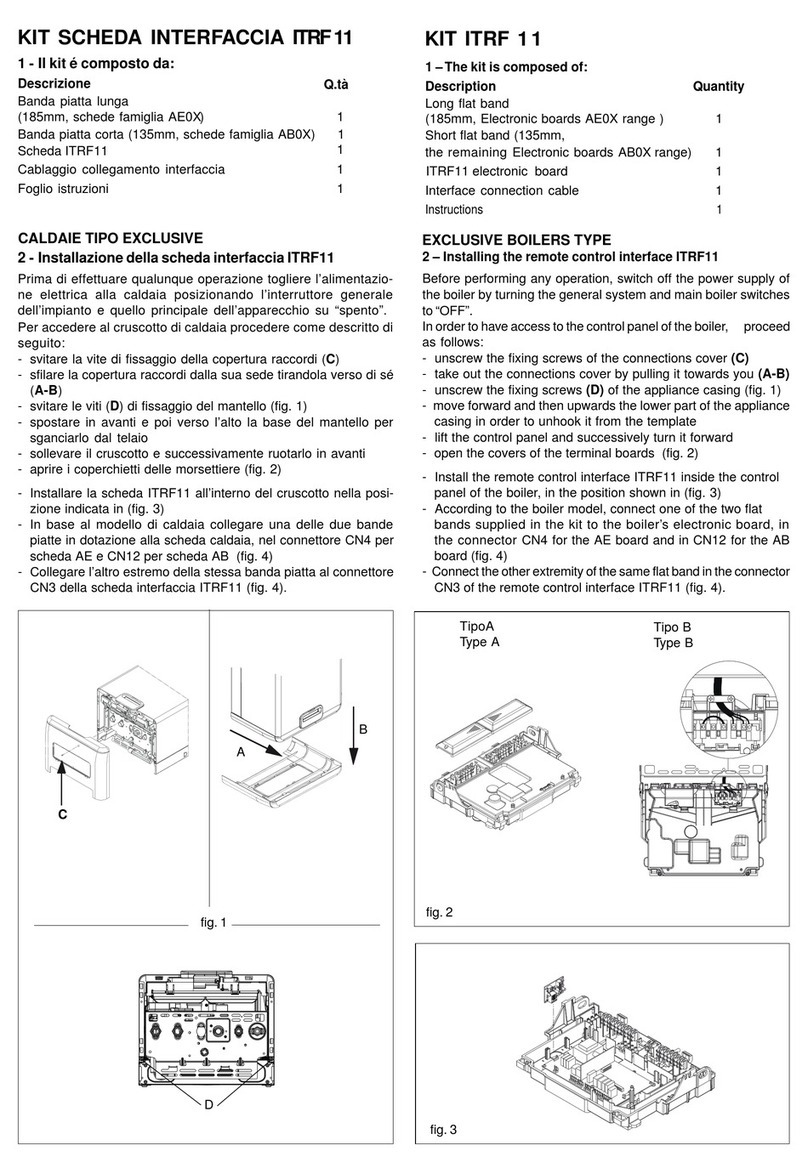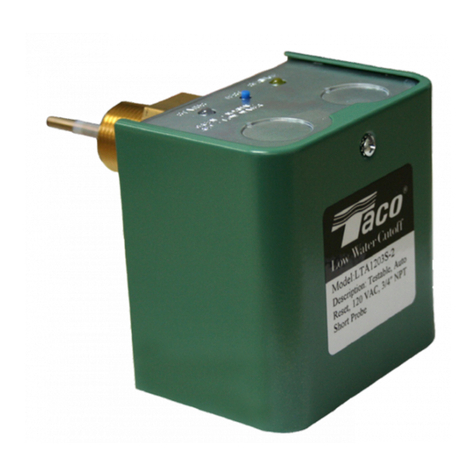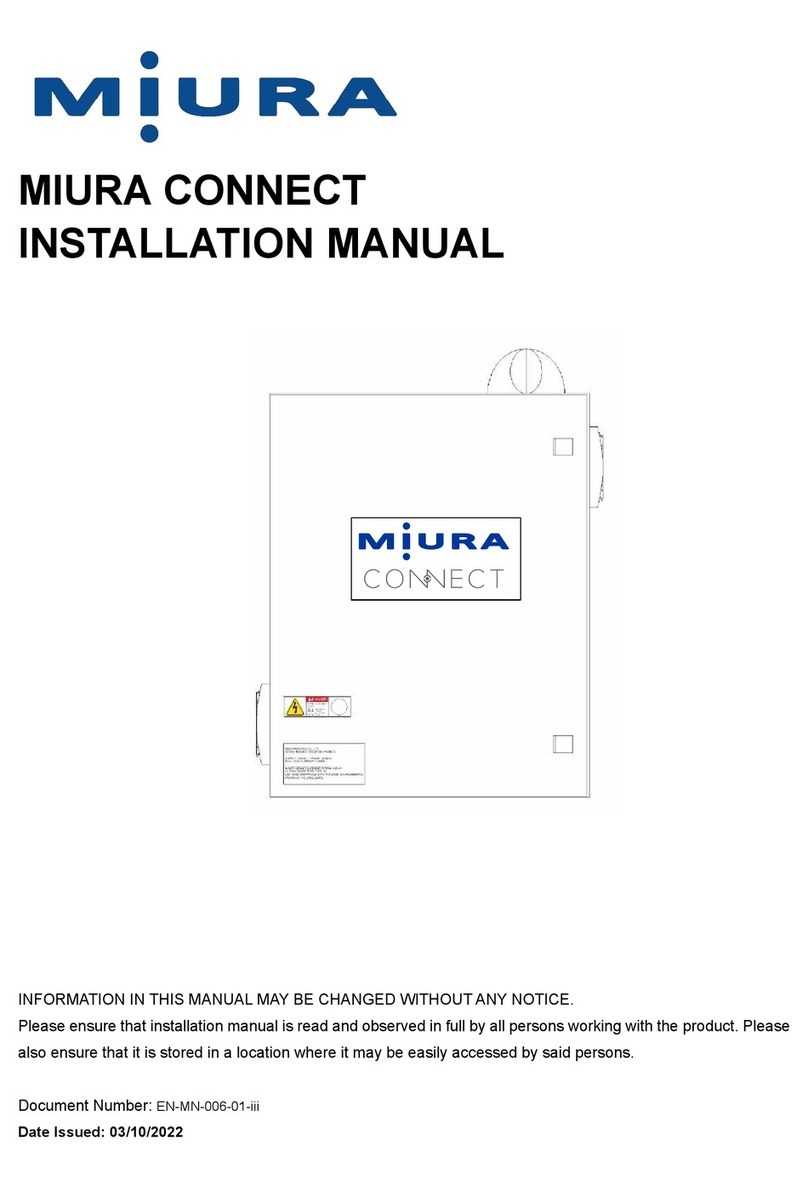
6 720 644 138 (2011/09) TSS
4| Symbols and Safety precautions
1.2 Safety instructions
BIn addition to the following instructions,
reading of the safety precautions provided in
the thermosyphon installation instructions is
strongly recommended.
Installation
BThe following instructions are for the
installation of the electrical element for the
thermosyphon and respective electrical
connections. It is essential that all precautions
are taken to prevent electric shock hazard.
BMake sure that the electric power capacity in
the house is sufficient for the correct
operation of the heating element together
with the other household appliances already
in use.
BThe installation should only be carried out by
a qualified technician.
BThe installation should be carried out prior to
installation of tank on roof.
BThe electrical connection should be done in
accordance with AS/NZS 3000:2007.
BFirst connect the water and only afterwards
connect to the electrical supply.
BThe heating element should only be
connected to the electric current after the
installation has been concluded.
BBe aware that there is scalding risk and that
the roof may become slippery due to the hot
water which will escape from the tank when
removing the element.
BThe power supply must be protected by an
individual circuit breaker at the main electrical
supply switchboard and rated to suit the
booster size. The supply to the solar water
heater can be operated directly from the
switchboard or via a remotely mounted switch
or time clock as requested by the customer.
The heater must be provided with a suitable
means for disconnecting the power supply.
Maintenance
BInspection of the electrical connections and of
the heating element and thermostat set by a
specialised technician is strongly
recommended, at maximum intervals of 2
years.
Client information
BInform the client about the operation of the
heating element and its handling procedures.
BAdvise the client that no modifications or
repairs should be carried out by person other
than licensed technicians.
BInform the client that in the event that no hot
water is used during a significant period of
time and/or there is exposure to intense solar
radiation, the electricity supply should be
switched off.
BInform the client that in the event that hot
water is not used over a long period of time
and/ or there is exposure to intense solar
radiation (e.g. summer holidays), the tank may
reach temperatures higher than the safety
control temperature of the thermostat
incorporated in the heating element. In such
cases it is recommended that a qualified
technician be contacted in order to reset the
thermostat so that it starts working again.
